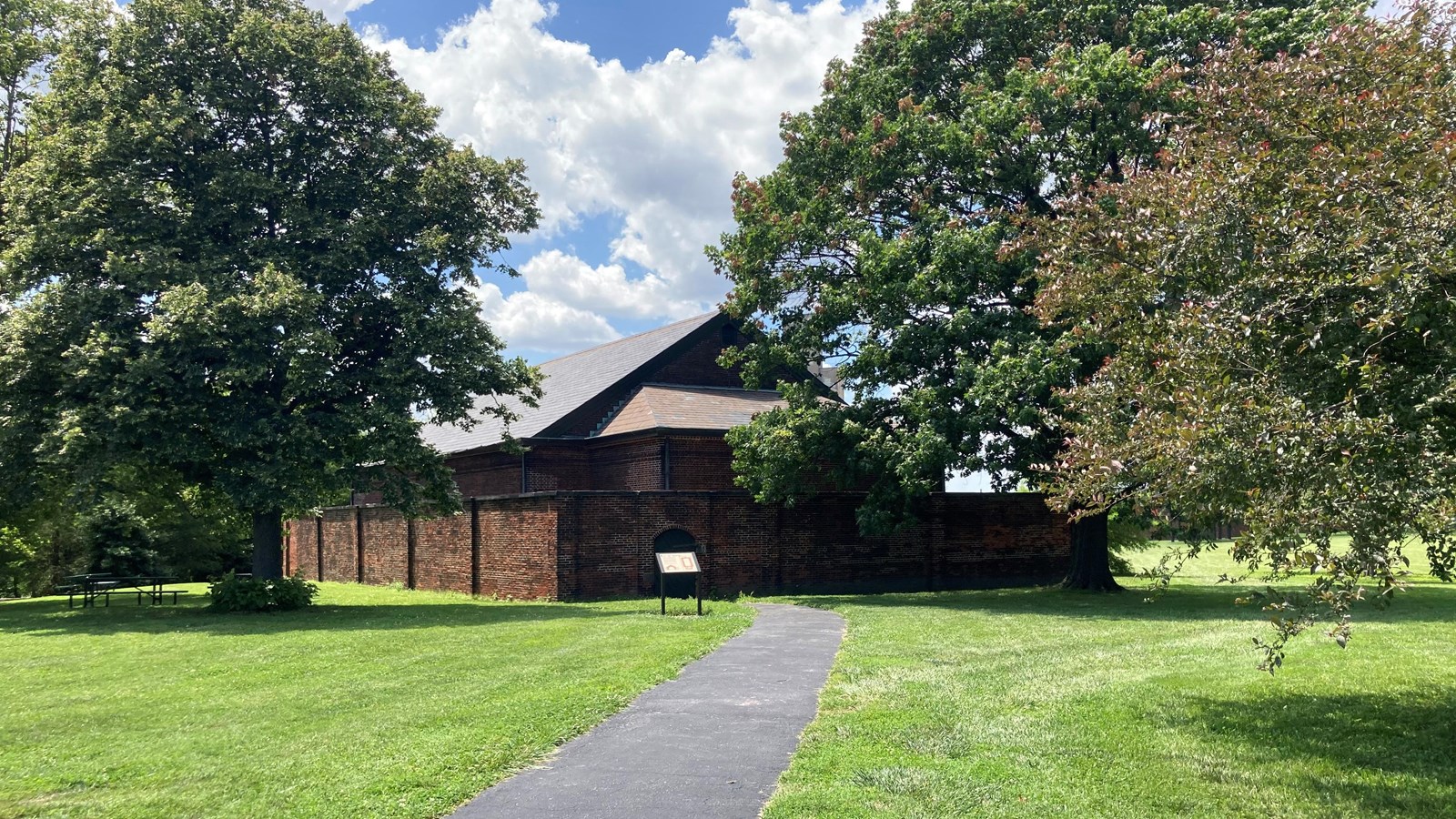Last updated: July 5, 2021
Place
Civil War Powder Magazine

NPS
Quick Facts
Location:
Baltimore, MD
Significance:
Part of Fort McHenry's expansion during the Civil War, the powder magazine increased storage capabilities for the fort with increasing fire power.
Amenities
6 listed
Accessible Sites, Benches/Seating, Cellular Signal, Historical/Interpretive Information/Exhibits, Picnic Table, Wheelchair Accessible
The Civil War Powder Magazine was created in 1863 to be able to solve gun powder storage problems. It was completed in 1864 and could hold up to 1,500 barrels of powder.
By the time the Civil War came to Fort McHenry, it was no longer readily prepared for war. Improvements were quickly made, including expanding the existing powder storage. The bombproof casements in the sallyport were expanded to hold powder, but an officer was worried about having large amounts of powder stored in a frequently used area where smoking was common. Thus, a Powder Magazine outside of the fort was contracted in 1863 and completed in 1864. The brick-vaulted magazine could hold up to 1,500 barrels of powder.
The Civil War powsder magazine is not open for the public to go inside, however visitors can access the outside of the structure by following the seawall trail toward the large Orpheus Statue. From the statue take the small path that branches off of the main seawall trail. Next to the building is a small interpretive sign as well as a picnic area.
By the time the Civil War came to Fort McHenry, it was no longer readily prepared for war. Improvements were quickly made, including expanding the existing powder storage. The bombproof casements in the sallyport were expanded to hold powder, but an officer was worried about having large amounts of powder stored in a frequently used area where smoking was common. Thus, a Powder Magazine outside of the fort was contracted in 1863 and completed in 1864. The brick-vaulted magazine could hold up to 1,500 barrels of powder.
The Civil War powsder magazine is not open for the public to go inside, however visitors can access the outside of the structure by following the seawall trail toward the large Orpheus Statue. From the statue take the small path that branches off of the main seawall trail. Next to the building is a small interpretive sign as well as a picnic area.
